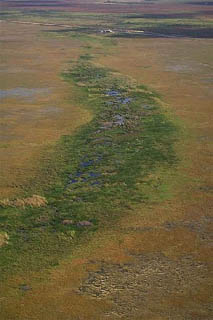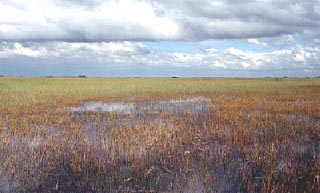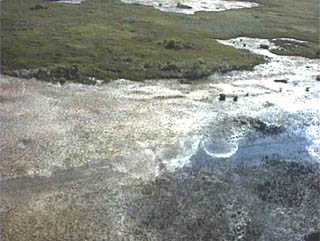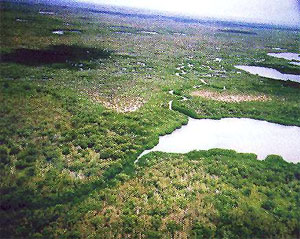Sloughs are main routes of moving water through the Everglades.

- Hydroperiods are approximately 11 months
- Shark River Slough and Taylor Slough are two main sloughs within the Everglades
The deepest marsh habitats within the Everglades are freshwater sloughs (pronounced SLOOs). Sloughs are the main paths of moving water through the Everglades. The hydroperiod is approximately 11 months, making this an idea habitat for aquatic plants. Tree islands consisting of hardwoods and cypress are common in areas with slough habitats. Slough waters support many fish and aquatic invertebrates.
The Everglades contains two main sloughs:

- Shark River Slough is located in the central and south Everglades, leading freshwater into the estuaries along the Gulf of Mexico. It is the main freshwater slough of the Everglades, although it has been greatly altered by drainage.

- Taylor Slough is smaller, located on the east side of the southern Everglades. It is the main source of freshwater entering Florida Bay, however water levels have been reduced drastically through overdrainage in recent years, greatly limiting flow into the Bay. This has impacted the salinity levels as well as the associated flora and fauna residing in the waters of Florida Bay.

Glossary terms used on page:
- hydroperiod: the period of time during which a wetland is covered by water.
- salinity: concentration of total salts dissolved in water, usually measured in parts per thousand. Full strength seawater measures 35 parts per thousand (ppt) salinity.